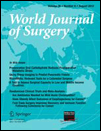Success and Failure for Children Born with Facial Clefts in Africa: A 15-Year Follow-up
Abstract
Background
This study reviews the 15 year program of our Department of Pediatric Surgery for the treatment and follow-up of children born with a cleft in Benin and Togo.
Methods
We analyzed files of children born in Africa with a cleft. They were referred to us through a nongovernmental organization (NGO) between 1993 and 2008 and assessed in Africa by local pediatricians before and after surgery. Operations were performed by our team.
Results
Two hundred files were reviewed: 60 cases of unilateral cleft lip, seven of bilateral cleft lip, 44 of unilateral cleft lip palate (UCLP), 29 of bilateral cleft lip palate (BCLP), 53 of cleft palate (CP), three of bilateral oro-ocular cleft, one of unilateral and two of median clefts (Binder), and one of commissural cleft. Sixty-nine (35 %) of these cases were not operated in Africa: 25 (12.5 %) had not shown up, 28 (15 %) were considered unfit for surgery (Down’s syndrome, HIV-positive, malnutrition, cardiac malformation), and 16 (7.5 %) were transferred to Switzerland. Palatal fistula occurred in 20 % of UCLP, 30 % of BCLP, and 16 % of CP. Evaluation of speech after palate surgery gave less than 50 % of socially acceptable speech.
Conclusions
Our partnership with a NGO and a local team makes it possible to treat and subsequently follow children born with a cleft in West Africa. Surgery is performed under good conditions. If aesthetic results are a success, functional results after palate surgery need further improvement to promote integration in school and social life.




